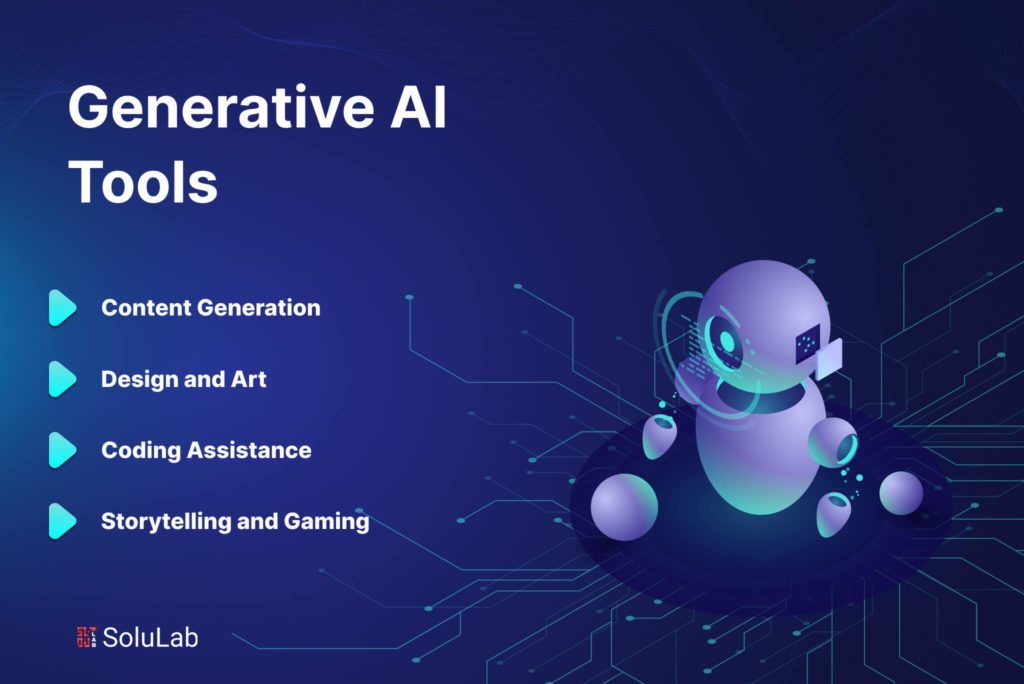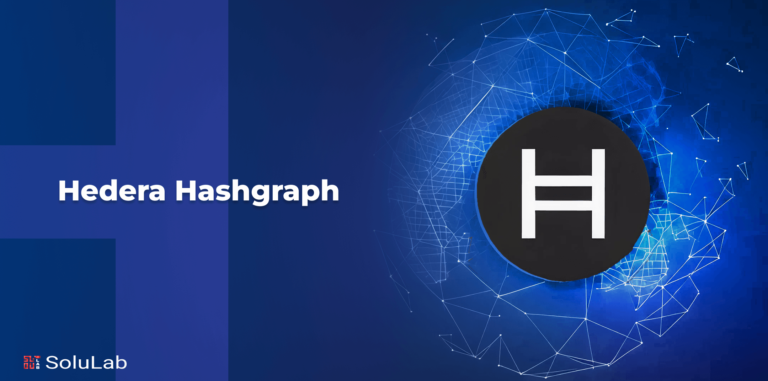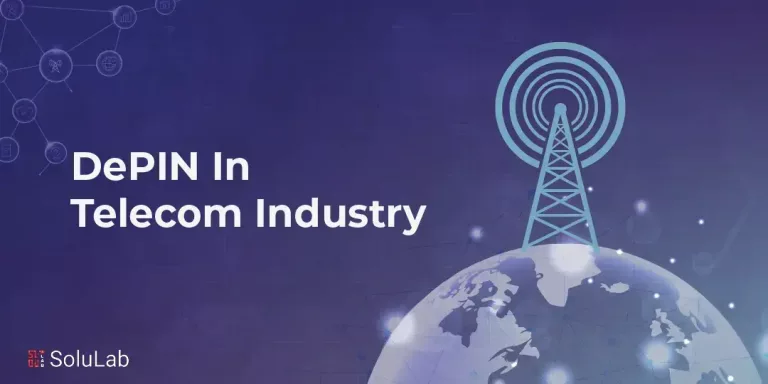
Industries and opportunities are changing due to generative artificial intelligence (GenAI). According to the World Economic Forum, over 80% of businesses intend to use genAI by 2025. This technology is growing rapidly as a key component of efficiency and innovation.
McKinsey estimates that genAI may create between $2.6 trillion and $4.4 trillion in value across businesses, propelling previously unheard-of expansion in fields including finance, healthcare, retail, and more.
AI is a force that is changing the global economy as companies incorporate it more and more into their operations. It is opening up new possibilities for innovation, automation, and productivity. In this blog, we’ll explore what generative AI tools are, the top 15 generative AI tools, their features, and more.
What Are Generative AI Tools?
Artificial intelligence systems known as “generative AI” are capable of producing new text, image, audio, or video content in response to a prompt or request. To create original content, they are trained on large datasets and employ machine learning to identify patterns and connections in the data.
The Impact of Popular Generative AI Tools Across Sectors
Generative AI systems, which can create original material and data, have changed many sectors. From automating repetitive tasks to reinventing content production, these tools are changing processes and opening new possibilities.
This article examines the growing importance of top generative AI tools technologies across industries, their potential for changing them, and their adoption hurdles. Each industry is using artificial intelligence tools to attain unique goals. Generative AI optimizes operations, improves customer service, and drives innovation across industries.
Top Generative AI Tools 2025
1. ChatGPT
OpenAI’s ChatGPT language model is known for its expressive text. It’s great at genuine interactions, smart reactions, and creative writing. This innovative technology has improved customer support bots, content development, and author brainstorming. Its natural language processing skills allow it to improve with updates. However, disinformation, bias, and difficulty recognizing intricate contextual nuances provide significant problems.
Key Features:
- Generates text that closely mimics human language.
- Engages in natural and authentic conversations.
- Provides detailed and insightful answers to a wide range of questions.
2. Scribe
Scribe, an amazing AI writing aid, changes content creation. It effortlessly summarizes information, writes compelling reports, and aids academic writing. This innovative tool helps journalists, students, and professionals research and write. Scribe excels at customized jobs and enhances productivity, but complicated creative writing may require human skill for precision.
Key Features:
- Dedicated AI writing assistant at your disposal.
- Generates content in various styles and formats.
- Summarizes articles, creates reports, and aids in academic writing.
3. Freepik AI
Bringing ideas and concepts to life, Freepik’s AI Image Generator blends user input with a choice of advanced AI models capable of creating high-quality, photorealistic images and digital art in seconds. Such state-of-the-art detailing and text-to-image prompt interpretation allow professionals and designers alike the ability to create specific visuals for complex projects and campaigns. Additional attributes, such as its save style and character function, promise consistency from project to project, perfect for building a brand identity.
Key Features:
- An easy and intuitive interface that caters to both professional and novice users.
- Freepik offers users a choice of AI models, including Mystic, Ideogram, and Google Imagen, each with different characteristics.
- Users can combine both written instructions and image references to get accurate results.
4. GitHub Copilot
GitHub Copilot improves coding by easily integrating with Visual Studio Code. Code snippets, explanations, and contextual guidance boost developer productivity and learning. This adaptable tool supports multiple programming languages, speeds up coding, aids learning, and encourages best practices. It uses external APIs for ideas, thus, the resulting code may need refining.
Key Features:
- Integration with popular code editors ensures a smooth workflow.
- Provision of not just code snippets but also explanations and contextual information for enhanced understanding.
- Instant and relevant suggestions for code completion.
5. GPT-4
GPT-4, an AI language model innovation, changes text production across domains. It improves content generation for writers, marketers, and educators. Its adaptability in natural language processing enhances data analysis. Success stories show its capacity to create unique storylines and individualized conversations. GPT-4 is flexible and accurate, however, inaccuracies and biases should be considered.
Key Features:
- Generates high-quality, diverse text on a range of subjects.
- Produces more coherent and nuanced responses, feeling natural and human-like.
- Tackles complex questions and tasks with improved accuracy.
6. Gemini
Gemini, an innovative chatbot and content production platform developed by Google. Driven by the advanced LaMDA transformer-based architecture, Bard represents Google’s creative answer to ChatGPT. A notable addition to the list of the best generative AI tools, Bard is now in its experimental stage and is only available to a limited number of users in the United States and the United Kingdom.
Key features:
- Utilizes the capabilities of LaMDA, a robust transformer-based model, enabling Bard to deliver exceptional results.
- Operates on a limited-access waitlist, catering to select users in the US and UK.
- Incorporates a user response rating mechanism, ensuring continuous improvement and refinement of Bard’s responses.
7. Cohere Generate
Cohere Generate’s wide range of features enables developers to design engaging and appealing dialogue systems. Its ability to create customized content makes it a useful tool for marketing initiatives, especially when it comes to creating unique emails. Although its versatility is greatly commended, it needs to be carefully fine-tuned to maintain a consistent context during interactions to earn a place on the list of generative AI tools.
Key Features:
- Tailored to handle various natural language generation tasks with ease.
- Facilitates the creation of interactive conversational agents.
- Offers proficiency in crafting personalized email content.
8. Dall-E2
The best generative AI tool, termed Dall-E2, improves picture creation by converting verbal cues into eye-catching images. This innovation enables designers and artists to create original artwork and personalized visuals by pushing the boundaries of creativity. While recognizing the limitations and occasional errors included in its training notions, Dall-E2 encourages innovation by bridging the gap between text and image.
- Dall-E2 excels in picture synthesis, turning text into complex images.
- It allows a variety of visual styles and genres, encouraging artistic innovation.
- Dall-E2 controls image composition and lighting to realize artistic visions.
9. Claude
Claude is an AI chatbot developed by Anthropic, known for its conversational skills, ethical design, and deep understanding of complex topics. It can write, summarize, answer questions, and assist with creative or technical tasks while maintaining a friendly, safe, and helpful tone in its interactions.
Key features:
- Efficient processing of extensive text data
- Engaging in natural and fluent conversations
- Automating and streamlining complex workflows
10. Synthesia
Synthesia AI is changing content production by combining text with realistic images with ease using deep learning techniques. This technology turns ideas into visually stunning experiences that go beyond imagination. Synthesia AI enhances the combination of text and images to new levels, maintaining its position as one of the top generative AI tools and revolutionizing how we express and represent concepts.
Key Features:
- Efficient text-to-video conversion driven by artificial intelligence.
- Generation of dynamic visuals, avatars, and scenes, unlocking endless creative possibilities.
- Audio integration through automated voice synthesis.
11. Duet AI
Content production, summarization, and rewriting are integrated into Gmail, Docs, and Meet by Duet AI. Inspired by AI chatbots like ChatGPT, it uses a strong, large language model (LLM). Duet AI goes beyond chatbots by seamlessly integrating with major Google apps, removing the need for copying and pasting. Key features of Duet AI for Google Workspace, currently in beta:
Key Features:
- Generates unique text content.
- Provides AI-driven code assistance to cloud users.
- Easily generates images based on prompts.
12. Copy.ai
Copy.ai is an AI-powered writing assistant that helps you generate high-quality content for blogs, emails, social media, and more in seconds. It’s perfect for marketers, founders, and creators who want to save time without sacrificing creativity
Features:
- 90+ content templates
- Multi-language support
- Blog wizard for long-form content
13. Jasper
Jasper is an advanced AI writing tool built to create persuasive and engaging content for marketing, sales, and branding. It understands tone, brand voice, and can generate everything from emails to SEO blogs.
Features:
- Brand voice customization
- SEO-optimized content creation
- Templates for ads, blogs, and social media
14. Midjourney
Midjourney is an AI tool that transforms text prompts into stunning, artistic images. Loved by designers, artists, and creatives, it’s known for its distinct visual style and powerful rendering capabilities.
Features:
- Text-to-image generation
- Custom styling through prompts
- High-resolution art outputs
15. Microsoft Copilot
Microsoft Copilot integrates directly into tools like Word, Excel, and Teams to help you draft, analyze, and automate work using AI. It boosts productivity by turning natural language into powerful actions.
Features:
- AI assistance in Office apps
- Data insights in Excel
- Smart email replies in Outlook
Conclusion
As we move into 2025, artificial intelligence continues to evolve, offering powerful generative AI tools that revolutionize various industries. The tools highlighted in this blog represent some of the top generative AI tools list available today, each offering unique capabilities. These generative AI tools are changing creative processes, improving problem-solving techniques, and establishing new standards for creativity.
A tech-savvy client aimed to change recruitment using AI. SoluLab built a feature-rich platform offering smart job matching, resume optimization, real-time career coaching, and networking tools. The result? 45% faster placements, 70% resume success, and 3x more referrals—making job searches faster, smarter, and stress-free.
SoluLab, a generative AI development company, can help you find solutions to your business queries. Contact us today to discuss further.
FAQs
1. How do generative artificial intelligence tools work?
Generative artificial intelligence tools work by training on large datasets and using algorithms to learn and mimic patterns found in the data. This enables them to generate new content that is similar to the input data but unique in its form.
2. What are the best AI tools for generative tasks?
The best generative AI tools include platforms like OpenAI’s GPT, DALL-E, and Google’s DeepDream. These tools are known for their advanced capabilities in generating text, images, and other forms of content.
3. Why should I use generative AI tools in 2025?
Generative AI Tools 2025 offers cutting-edge features and improvements over previous versions. They enhance productivity, creativity, and efficiency by automating content creation and providing innovative solutions for complex problems.
4. What are the top generative AI tools to check out?
Some of the top generative AI tools to explore include OpenAI’s GPT-3, Google’s BERT, and Nvidia’s GauGAN. These tools are at the forefront of AI technology and are widely used in various industries.
5. How can generative AI tools benefit my business?
Utilizing generative AI tools can streamline operations, enhance creativity, and improve customer engagement. By leveraging these artificial intelligence tools, businesses can automate repetitive tasks, generate innovative solutions, and stay competitive in their respective markets.
6. Can SoluLab help me choose the right generative AI tool for my business?
Absolutely! SoluLab’s team will assess your goals and use cases, then recommend the best AI tools (from writing to image generation) that align with your industry, whether you’re in e-commerce, healthcare, or finance.





